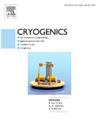液氢泄漏时空气壁防护性能数值模拟及关键影响因素分析
IF 2.1
3区 工程技术
Q3 PHYSICS, APPLIED
引用次数: 0
摘要
在各种情况下,液氢通常是最适合储存和运输的选择。然而,一旦发生泄漏,液氢会迅速蒸发成气态氢,造成重大的潜在危害。因此,研究提高液氢使用安全性的措施至关重要。本文提出了一种称为“空气墙”的方法。通过对传统外滩墙体系与空气墙体系的比较,表明空气墙具有更有效的保护作用。对风壁气流速度的分析表明,气流速度越高,防护效果越好。通过调整气壁激活时间,发现无需连续操作;在氢气到达之前激活空气壁也可以提供有效的保护。对空气壁的尺寸也进行了研究,发现在相同的空气流速下,空气壁越小,保护效果越差。最后,分析了不同大气风速对空气壁的影响,发现风速越高,空气壁速度越大,才能进行有效保护。这种保护方法有望在液氢储存领域得到广泛应用。本文章由计算机程序翻译,如有差异,请以英文原文为准。
Numerical simulation of air wall protection performance during liquid hydrogen leakage and analysis of key influencing factors
Liquid hydrogen is often the most suitable choice for both storage and transportation in various situations. However, once a leak occurs, liquid hydrogen will rapidly evaporate into gaseous hydrogen, causing significant potential hazards. Therefore, it is crucial to study measures to improve the safety of liquid hydrogen use. This paper proposes a method called “air wall.” A comparison between the traditional bund wall system and the air wall show that the air wall offers more effective protection. Analysis of the airflow speed of the air wall reveals that higher airflow speeds enhance protective effects. By adjusting the activation time of the air wall, it was found that there is no need for continuous operation; activating the air wall before the arrival of hydrogen can also provide effective protection. The size of the air wall was also studied, and it was found that at the same air flow velocity, smaller air walls provide poorer protection. Finally, the impact of various atmospheric wind speeds on the air wall was analyzed, and it was found that the higher wind speed, the greater air wall speed for effective protection. This protective method is expected to be widely implemented in liquid hydrogen storage areas.
求助全文
通过发布文献求助,成功后即可免费获取论文全文。
去求助
来源期刊

Cryogenics
物理-热力学
CiteScore
3.80
自引率
9.50%
发文量
0
审稿时长
2.1 months
期刊介绍:
Cryogenics is the world''s leading journal focusing on all aspects of cryoengineering and cryogenics. Papers published in Cryogenics cover a wide variety of subjects in low temperature engineering and research. Among the areas covered are:
- Applications of superconductivity: magnets, electronics, devices
- Superconductors and their properties
- Properties of materials: metals, alloys, composites, polymers, insulations
- New applications of cryogenic technology to processes, devices, machinery
- Refrigeration and liquefaction technology
- Thermodynamics
- Fluid properties and fluid mechanics
- Heat transfer
- Thermometry and measurement science
- Cryogenics in medicine
- Cryoelectronics
 求助内容:
求助内容: 应助结果提醒方式:
应助结果提醒方式:


